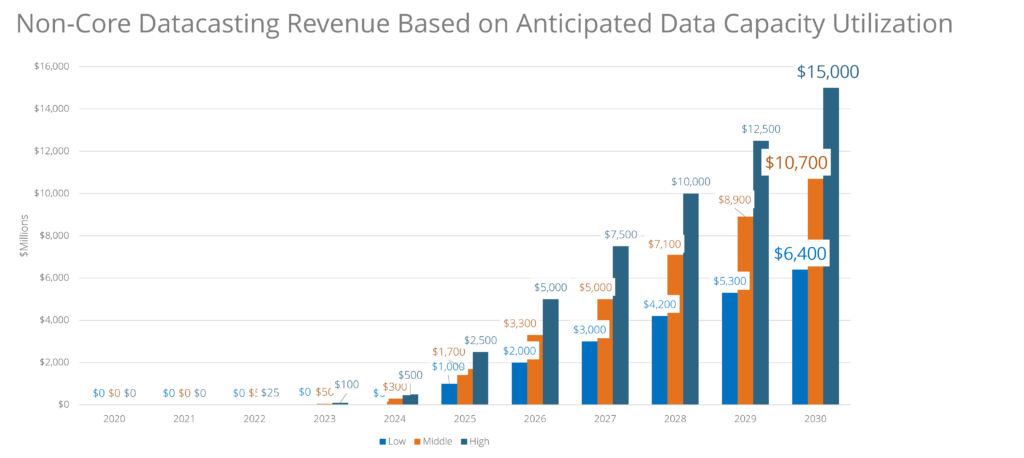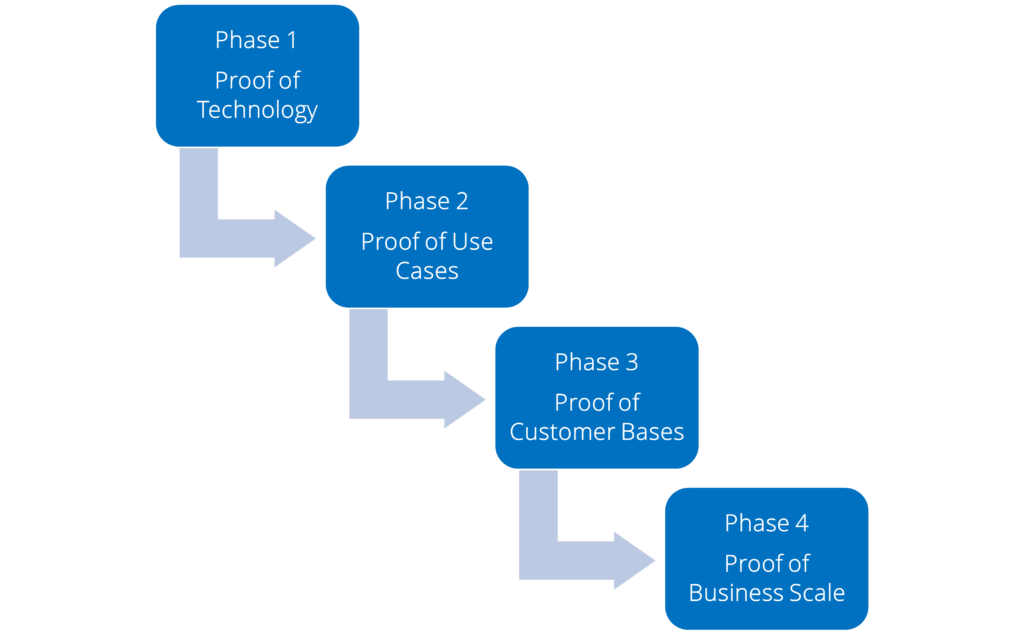BIA evaluated three datacasting revenue scenarios: High, Middle and Low cases utilizing 7 Mbps, 5 Mbps, or 3 Mbps of ATSC 3.0 data capacity. BIA’s non-core datacasting revenue forecast estimates the Middle Case scenario will produce revenue rising to $10.7B annually by 2030 or 22 percent of total revenue when including advertising and subscriber fees.

For the three scenarios to hit the revenue marks in our forecast, the market must evolve through the four phases we describe in the exhibit below.

We valued the spectrum broadcasters would be willing to allocate non-core (i.e., services other than OTA TV advertising and associated OTA subscriber fees) datacasting services by establishing an “opportunity cost” of what revenue allocation of spectrum to core services would return. In other words, we evaluated cases such as the expected revenue that could be generated by adding an incremental digitnet channel versus a datacasting service such as leasing that capacity to a third party (such as BitPath) who could bring that capacity to an adjacent marketplace in which broadcasters are not currently participating.
Our expectation is that the market and associated revenue flows to be associated with entry into non-core markets will be attractive to OTA broadcasters as the supply and demand ecosystem evolves, particularly in the 2025-2030 period. We include both consumer and non-consumer (e.g., business, government, education) use cases in our non-core revenue forecast.
The capacity broadcasters deploy into the non-core services market will be attractive in that market immediately as ATSC 1.0 services can be migrated over to the superior 3.0 infrastructure to offer more data capacity and more robust signals suited to mobile and on-the-go use cases. The ATSC 1.0 datacasting marketplace has already revealed some pricing and valuation metrics for capacity we can use to inform our estimates for 3.0 datacasting capacity. When the FCC relaxes its requirement for OTA broadcasters to simulcast ATSC 1.0 services on 3.0, this will free up even more data capacity that can be brought to market. Again, this will occur mostly likely in the 2025-2030 period. These are key drivers in our scenario-based forecast.
BIA is making its ATSC 3.0 Datacasting Forecast report available: click here for your copy.
